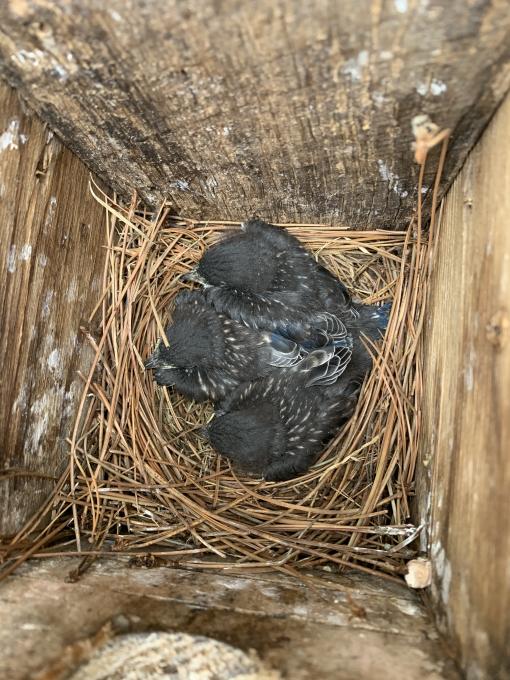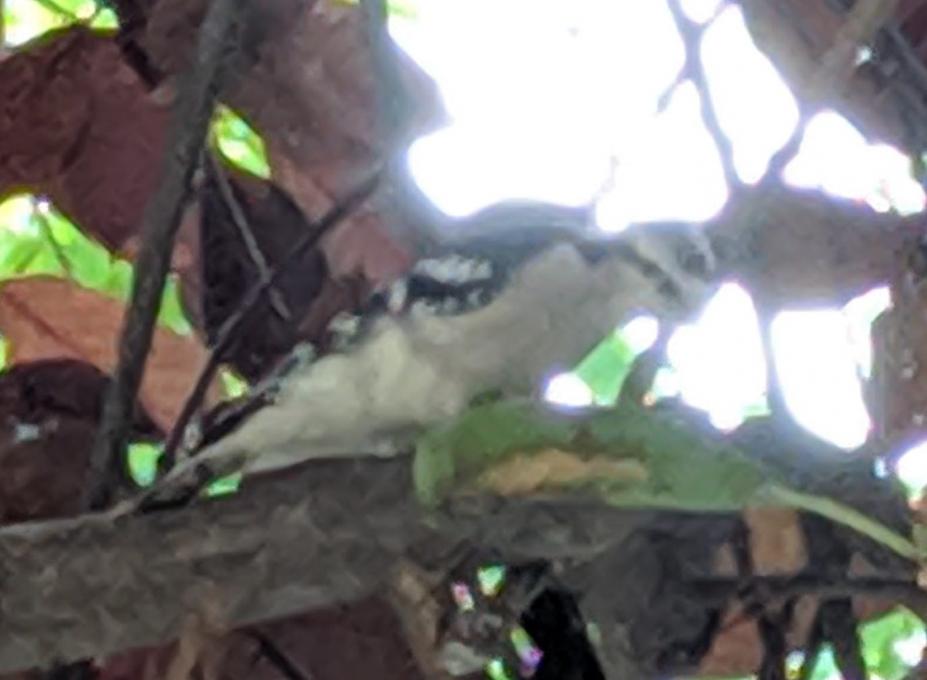The Cornell Lab Bird Academy › Discussion Groups › Joy of Birdwatching › Activities: Exploring Birds
-
My husband and I were gifted this course for Christmas, along with a bird feeder for our yard in RI. I have always loved cardinals and was really excited when we had a cardinal visit our feeder right away. We are noticing so many great birds in our yard and neighborhood now!

-
I have been interested in birding for some time but had not been as intentional with it until last year--with the help of some helpful resources and gifts from my partner, sister, and colleague. I love seeing peregrine falcons and condors / vultures in CA (which I did not see really in Boston), and hummingbirds.
-
Hello. I'm working through this course, and this is my first post. So we will see how it goes. I live in Mount Airy, MD -- near Baltimore. Went out in the backyard yesterday (31-Dec) evening and the first birds I saw were a Junco, then a Chickadee, and a Carolina Wren that came out of a hydrangea and sang to me. Those are all in the Songbird group, I think. There was a Downy Woodpecker that was eating our suet -- that's group 2. And then there is a small pond along our walk that has Mergansers on it in the winter. I'll count that as group 3. My favorite bird in my neighborhood is the Indigo Bunting. I attached a picture that I took a couple summers ago at Audrey Carroll Sanctuary near my house. At this time of year, I also really enjoy the Nuthatches. I like the staccato song they sing while they climb down the tree trunks. Thanks for reading! I'm really enjoying the class, and have learned quite a bit!

-
Hello, Seems like there will be a lot of new birders now that we are home and taking time to see what is around us! I too got this course as a gift, although I have been a sort of bird watcher for a while. Looking forward to sharing experiences along the way!
-
Like others, I got this course as a gift since I have been birding during the pandemic as a new fun hobby since I discovered the Audubon app in late spring. I recently came to Florida from my home in Philadelphia and I am having such fun watching birds on the beach. This is a photo of my favorites: Royal Terns. I like how their wintertime black heads look like Groucho Marx eyebrows. In the photo you can also see a ruddy turnstone, which took me forever to identify. It is hard learning to bird while social distancing since it is less easy to talk with experienced birders. Even so, I am proud to have identified more than 70 birds! I wish I had a better camera to get some closeup shots. Some of you have some amazing photo skills!

-
I got this for Christmas along with other birding gifts, having become a nascent birdwatcher during the pandemic. My (adult) children are humoring my obsession quite gracefully. So at my backyard suet feeder in Central Virginia I have one bird that visits occasionally that I am having trouble identifying- my best guess is least flycatcher but not sure he should be here this time of year. Smaller than a sparrow, white eye-ring, two white bars on wings, and from back his black wings with white bard touch to make distinct V below grey back. Advice appreciated!
-
 Does your bird look anything like this? If it does you probably have a 'Ruby Crowned Kinglet'
Does your bird look anything like this? If it does you probably have a 'Ruby Crowned Kinglet' -
@Cecilia Thanks for suggestion! I think my little fellow is not quite that little - seemed bigger than my chickadees - but not sure. He is an itinerant visitor but I’m hoping he comes back soon and I will concentrate on size if he does.
-
-
I recently moved to the Finger Lakes Region of New York State and can't believe the birds in my backyard. We have seen Cardinals, Blue Jays, Heron, Mallard ducks and a woodpecker that I haven't been able to identify yet, I think it could be either a Downy or Acorn woodpecker. This class is a wonderful gift from my daughter and I am exciting about identifying the different groups of birds in my area and hope to join a bird watching group soon.
-
We mostly have songbirds in my area (there aren't a lot of waterfowl or shorebirds in the area). I helped out on the Christmas bird count in 2019 and I am particularly fond of the Say's phoebe as that was the first bird I managed to identify by myself. I've also always liked the Great Blue Herons, although I haven't seen them here.
-
Activity 2 I saw this white juvenile snow goose eating along side some Canadian Geese in the Nisqually Estuary Trail in Billy Frank Jr. Wildlife Refuge near Olympia,WA.

-
I’ve recently moved to a lake outside of Memphis TN. I live on a small lake and have enjoyed discovering all of wildlife that living in the area. I have particularly enjoyed the Great Blue Herons and the Green Herons.



-
Gorgeous pics!
-
-
 My daughter gave me this course for Christmas. How do I choose just one favorite bird lol? I love the Northern Flickers that visit my suet feeders (the bird on the right in the photo). I have a male and female and built a nest box for them that they already seem to have claimed even though it is December. I packed it full of aspen shavings animal bedding and they "carved" out the cavity just like you see in YouTube videos. I also like the Ladder-backed Woodpecker (left in the photo), 2 females and 2 males have been in my yard at the same time. I participate in FeederWatch and have done 2 counts so far. This has been a great hobby to begin during the pandemic.
My daughter gave me this course for Christmas. How do I choose just one favorite bird lol? I love the Northern Flickers that visit my suet feeders (the bird on the right in the photo). I have a male and female and built a nest box for them that they already seem to have claimed even though it is December. I packed it full of aspen shavings animal bedding and they "carved" out the cavity just like you see in YouTube videos. I also like the Ladder-backed Woodpecker (left in the photo), 2 females and 2 males have been in my yard at the same time. I participate in FeederWatch and have done 2 counts so far. This has been a great hobby to begin during the pandemic. -
We went on a nature walk in the back bay and saw ducks, shorebirds, songbirds, and a raptor.
-
I liked the loon from the wall of birds best because of the audio of its song.
-
We enjoy the hummingbirds that feed and nest in our front yard.

-
Hi- I got this for Christmas. I am 11. I lost my newpaper carrier job in May and started making bird treats for my family and neighbors. I like learning about birds in my backyard. I live in a city. I like the pictures here from places hat do not look like where I live. I am learning about birds so I can help my customers. I have a lot of customers now. My yard has a lot of birds now. I hung a finch sack and the finches now found it and eat at it. Here is a picture. I used Merlin and think I have juvinile american finches. But it is hard to tell because the app tells me the finches change color in the winter. I also have a woodpecker in my yard. I think it is a hairy woodpecker. I have a lot of sparrows and wonder if they are all house sparrows or differnt kinds of sparrows. From Elliott

-
Elliott I love your birds and your bird treats! Very creative, thanks for sharing!
-
-
Absolutely loving this course! I'm lucky enough to live near a place called Pajaro Dunes (pajaro = bird) near Watsonville, CA. I'm just beginning to identify all of the birds there, of which there are many. It's a freshwater river mouth that meats the Pacific Ocean. There are many Brown Pelicans here, but there are also fresh water White Pelicans (which are huge!).


-
I am just starting this introductory birding course & liking it. I want to share in this section Activity 2: My Field Guide, which I really like, is "Birds of Ontario" by Andy Bezener. My wife and I are fortunate to live in the Bay of Quinte area where we get to see lots of birds. Along the Belleville Waterfront Trail where we walk there are lots of Geese, many even winter over here. Also in the last few years Swans have come to live here. Using my field guide I believe they are Mute Swans due to their orange bills (thanks field guide). I am including a pic of a Swan in this post. Lastly lots of ducks are to be seen all year round. Mallards are common, although other species are also seen. I intend to try to identify as many waterfowl species as I can. Cheers.

-
The Belleville Waterfront Trail is lovely! I just discovered it this summer (I live in Ottawa).
-
-
Hello! I live in NW Wyoming. At this time of year we see black-capped chickadees a lot as well as ravens and magpies. We also have trumpeter swans and bald eagles who over-winter here.
-
I think my favorite is the Common Grackle, when I first saw him in my backyard and snapped this photo, he was one of the first bird photos that I got to turn out not completely blurry! Hahaha, because of that he's got a special place in my heart! I starting birding in March due to quarantine, which is weird because all my adult life I have been afraid of birds. I had a phobia and would literally cross the street if a pigeon was in front of me (sound silly now). My family finds it hilarious that now I'm crazy about birding. In fact this course is a present from one of my best friends! As a new birder every "first" time I see (id) a new-to-me bird, that's my favorite until the next one!

-
Your comments made me smile :)
-
-
We love our Rose Breasted Grosbeaks. They return every year and raise new families on our land. My husband jokes thar we should call our place “Grosbeak Farm.”

-
<p style="text-align: left;">Activity 2: one bird described for each of three groups</p> <p style="text-align: right;">Woodpeckers—Northern Flicker. I used Merlin and “All About Birds” to obtain information about this species. Our lesson lists the following characteristics for the woodpecker group:</p> <p style="text-align: left;">“Climb along trunks and whack at wood; distinctive group.</p> <p style="text-align: left;">Cling to tree trunks and sides of branches Hammer on wood and peck holes Small to medium-sized Medium-sized, pointed bill Short neck Moderate to short tail Very short legs”</p> <p style="text-align: left;">Unlike most of its fellow woodpeckers, this is a moderately large bird, being in size between a robin and a crow. It is brown with black markings; the eastern variant has yellow on its wings and tail, whereas the western has red. Its bill is medium-sized and slightly curved. It has a white rump that may be seen in flight. These birds hammer on the ground where they search for insects (beetles and ants), but will live in holes in trees at least 6’ above the ground surface, where they build their nests. They like to capture flying insects with their tongues. They also eat berries and seeds. They are found in ecotonal areas, where they can access sparse tree cover in open areas, as well as access forested areas.</p> <p style="text-align: right;">Wading Birds—Roseate Spoonbill. I used Merlin, “All About Birds” and the Audubon Society website to obtain information about this species. Again, our lesson provides the following list of characteristics for the Wading Birds group:</p> “Large, long-legged birds often wading in water; includes herons, egrets, ibis, storks, and cranes. Wade in water, sometimes fields Large to very large Very long neck Long bill, may be curved Very long legs Short tail” The Roseate Spoonbill is a large bird with a pink body and long pink legs, a white head, red eyes, and a very distinctive bill that is flat, like a spoon, and used for capturing prey in shallow water. These birds wade in shallow (5”) fresh or salt water areas and use their bills to sift muddy water for fish, aquatic invertebrates like crustaceans, and other small aquatic life. Their color comes from carotenoids found in the food they eat. These birds are social and are often found in mixed flocks with other similar birds, like Ibises, Herons, Cranes, and Storks. In the United States, they are found in states along the Gulf Coast and on Florida’s southern Atlantic Coast. They occur along the coasts of Mexico, and throughout South America. The distinctive bill shapes are somewhat famous in North American archaeology, as they show up as decorative elements on pottery found in Iowa, Illinois, and Missouri between 200 BCE to 400 CE. These are areas far outside of the geographic distribution of these birds. Such art-work helped support the concept of a far flung interaction amongst prehistoric peoples throughout Eastern North America. People traded copper from the Upper Peninsula of Michigan; catlinite, or Pipe Stone, from Minnesota; conch shells from the Gulf Coast; spike freshwater mussels from Eastern Georgia, used for personal adornment, such as necklaces; and had knowledge of fauna and flora from other parts of the continent, like the Spoon Bill. Pottery in Illinois was made from local materials using decorative motifs of birds from another part of the continent. How did ancient Illinoisans know what these birds looked like? We have examples of skeletal remains of these birds found buried with humans from the time. <p style="text-align: right;">Parrots—Scarlet Macaw. I used information from the Rainforest Alliance to obtain information on this species. Our class provides the following information:</p> “Parrots have a heavily curved, short, strong bill; distinctive group. Large head Short neck Short, strong bill with upper mandible curving over the lower one Short legs Many with brilliant colors on parts of body; mainly green” Scarlet Macaws are large birds and represent the largest of the parrots in the world; they can be up to 33” long from tail tip to the tip of the beak. Their faces are almost featherless and white. The dominant color is red on wings, tails, and body. The wings also have yellow and blue feathers. The large curved beak helps the bird eat the hard nuts found in the rainforests of Mexico and throughout South America. It is not uncommon to find hundreds of these birds clinging to clay cliffs along a river, as the clay helps neutralize poisons they ingest when eating certain toxic fruits that would kill other animals. They live in large gregarious groups in tall deciduous trees near rivers. They like to nest in holes found in dead trees and they mate for life. Adults love to preen one another, as well as their offspring, which helps form strong social bonds. These magnificent birds are sometimes stolen from their nests as juveniles to be sold in the United States for as much as $4,000.

-
 I just signed up for the course as well and find it extremely interesting. I guess I always liked watching and listening to birds, but I never took the time to really learn much about them. Since this course I venture out in the backyard and around the local waterways and I see lots of amazing flying neighbors!! The Eastern Bluebird above is probably one of my favorites because they come and visit with me on the porch, sit on the back of my lawn chairs, and well, just make themselves right at home. I also think they're cute as well :-) I hope to do more bird watching in my area when Covid is under control, but in the meantime my backyard is showing me amazing things!!!! Y'all have fun.............................................
I just signed up for the course as well and find it extremely interesting. I guess I always liked watching and listening to birds, but I never took the time to really learn much about them. Since this course I venture out in the backyard and around the local waterways and I see lots of amazing flying neighbors!! The Eastern Bluebird above is probably one of my favorites because they come and visit with me on the porch, sit on the back of my lawn chairs, and well, just make themselves right at home. I also think they're cute as well :-) I hope to do more bird watching in my area when Covid is under control, but in the meantime my backyard is showing me amazing things!!!! Y'all have fun............................................. -
What a beautiful bird. They aren't afraid of you, they come to your porch when you're there? How special.
-
@Jacqueline If I'm really quiet they will come by and I can stand in the doorway or watch from the window .
-
Great photo! Love the Eastern Bluebird. There's a few places I go birding where I see and hear them regularly... always makes my day
-
We love our bluebirds! We have a pair that raise two families every year in one of our nest boxes. We monitor these boxes for Cornell’s NestWatch project. They ask us to take photos when we check the boxes if we can do so without disturbing the birds. Here are some of our nestlings from this past summer (:

-
@Kim We have recently moved to an area where we've seen many bluebirds! We hope to put up some houses in the spring. Any tips? I am hopeful that we will attract some families! They are so beautiful to watch. They love our birdbaths and we really enjoy seeing them! Thank you!
-
-
I have just signed up for the course. I used to be into bird watching but I guess I let life and career get in the way. I have forgotten more than I remember. It seems some feral cats have invaded my neighbor and the birds seem to have disappeared a couple of weeks ago. I ordered a live trap, and I am going to try to catch them and take them to the humane society. The squirrels also vanished at the same time, and normally the yard is full of them.
-
Activity 3, my favorite neighborhood bird is the Phoebe... literally my neighbor as it nests in the eaves of the barn as well as my fixed back door awning. Seeing (and hearing) them return each year means I’m in for the ultimate treat of watching their fascinating and adorable behaviors, listening to their songs, and observing another season of creation as they raise a family. It’s a giddy feeling when I know they’re back!
-
I just signed up for this class last week as something fun for my friend and I to do together. We have become birding buddies this year. We are in Chicago, so we don't have a ton of diversity in our urban neighborhoods, but we've started to venture out to some of the forest preserves. In our own backyards, we both really love the Downy Woodpecker. We see them here a lot. I only used my phone camera, so the photo is not so great.

-
Nice! I live in a suburb where the Downy Woodpecker is frequently seen and heard. They're a joy to watch, the way they maneuver in the trees and forage so quickly is amazing!
-
Read More:


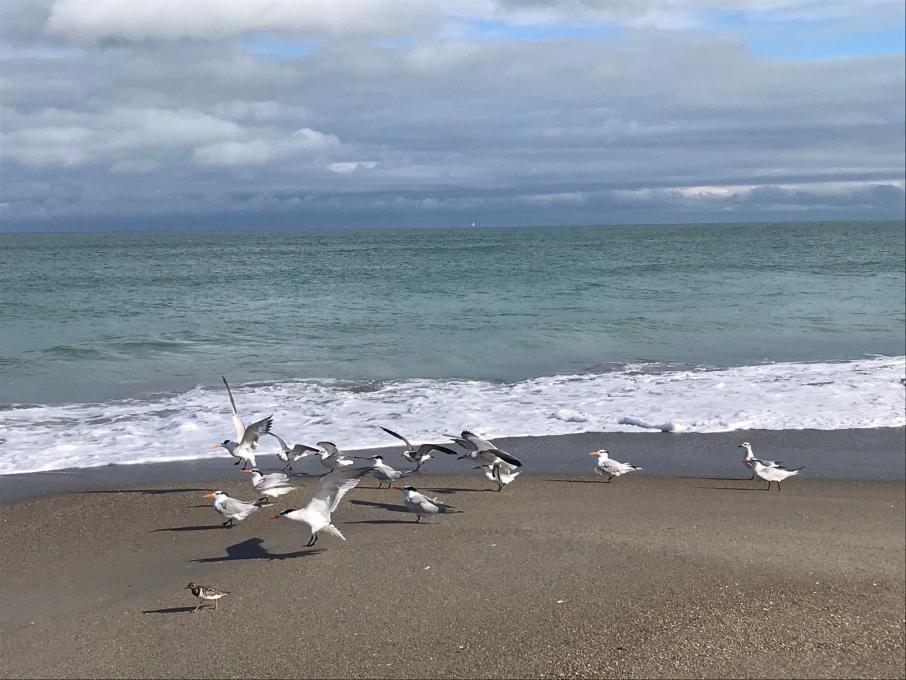
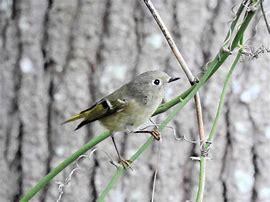 Does your bird look anything like this? If it does you probably have a 'Ruby Crowned Kinglet'
Does your bird look anything like this? If it does you probably have a 'Ruby Crowned Kinglet' 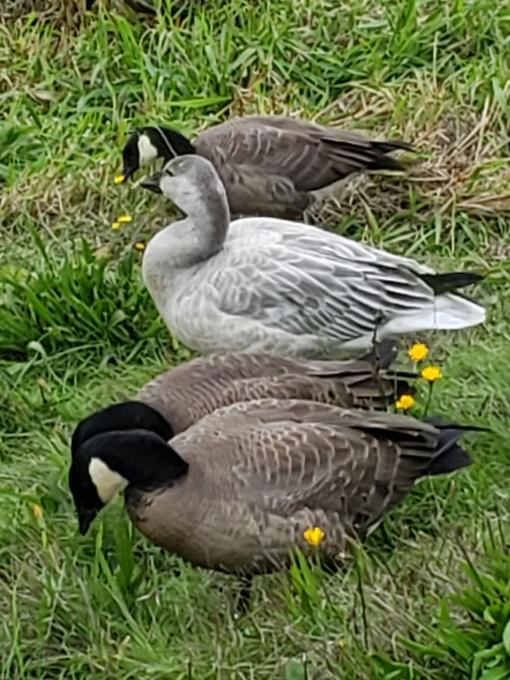
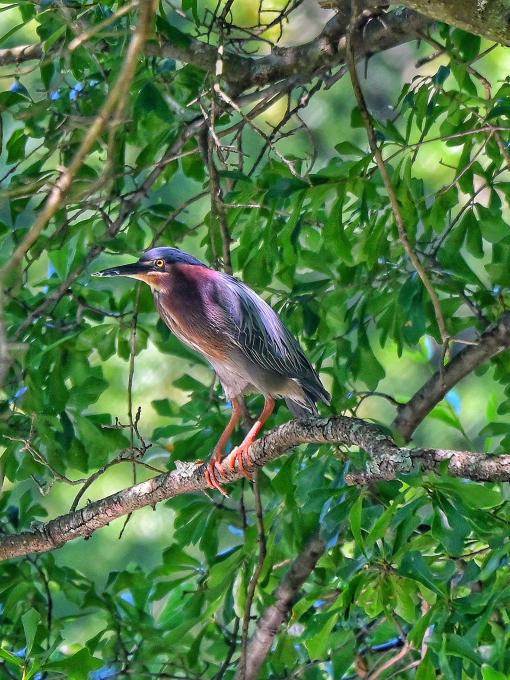

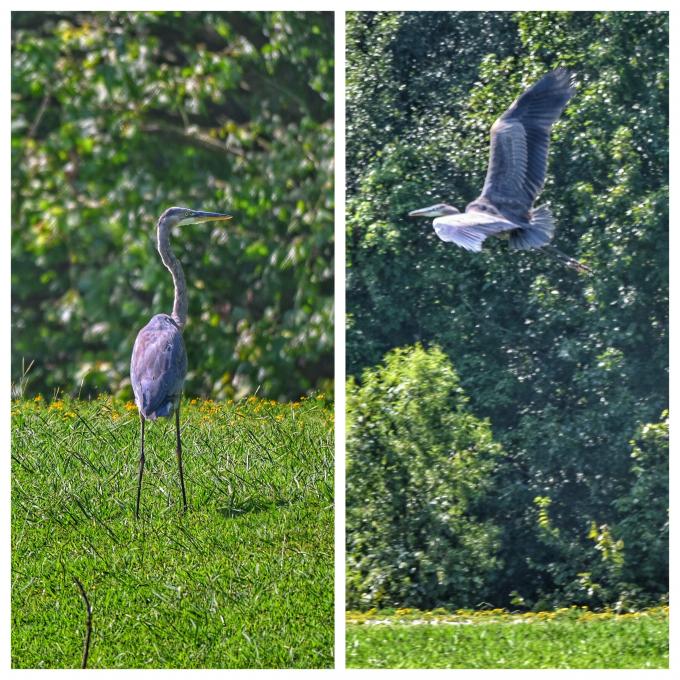
 My daughter gave me this course for Christmas. How do I choose just one favorite bird lol? I love the Northern Flickers that visit my suet feeders (the bird on the right in the photo). I have a male and female and built a nest box for them that they already seem to have claimed even though it is December. I packed it full of aspen shavings animal bedding and they "carved" out the cavity just like you see in YouTube videos. I also like the Ladder-backed Woodpecker (left in the photo), 2 females and 2 males have been in my yard at the same time. I participate in FeederWatch and have done 2 counts so far. This has been a great hobby to begin during the pandemic.
My daughter gave me this course for Christmas. How do I choose just one favorite bird lol? I love the Northern Flickers that visit my suet feeders (the bird on the right in the photo). I have a male and female and built a nest box for them that they already seem to have claimed even though it is December. I packed it full of aspen shavings animal bedding and they "carved" out the cavity just like you see in YouTube videos. I also like the Ladder-backed Woodpecker (left in the photo), 2 females and 2 males have been in my yard at the same time. I participate in FeederWatch and have done 2 counts so far. This has been a great hobby to begin during the pandemic. 
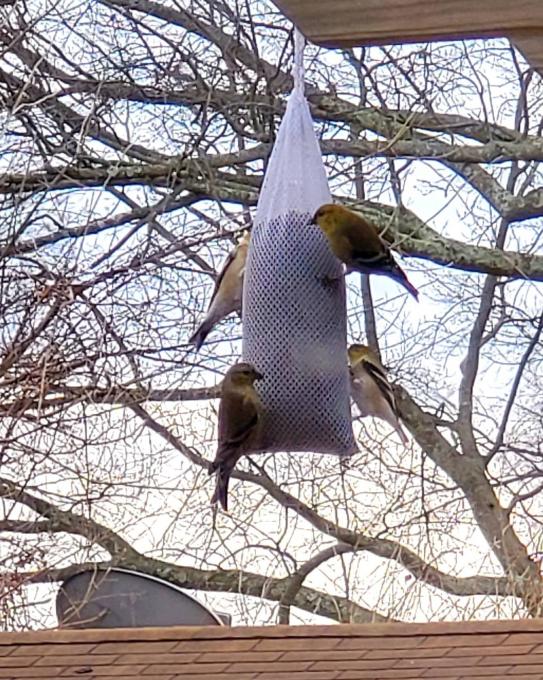
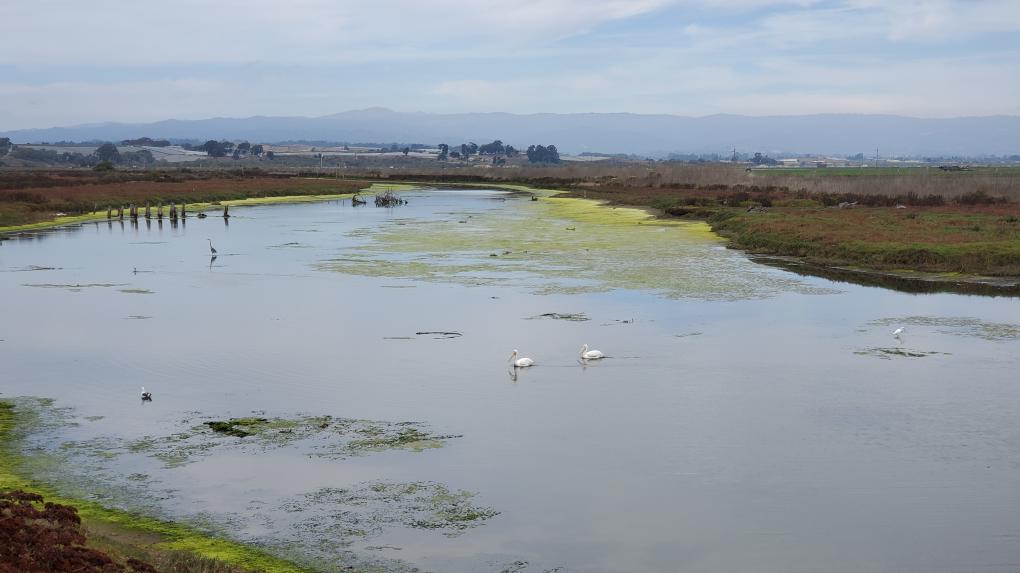

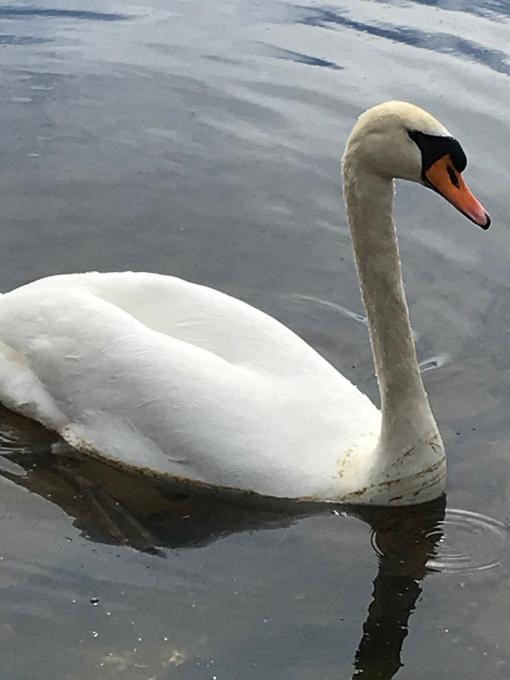
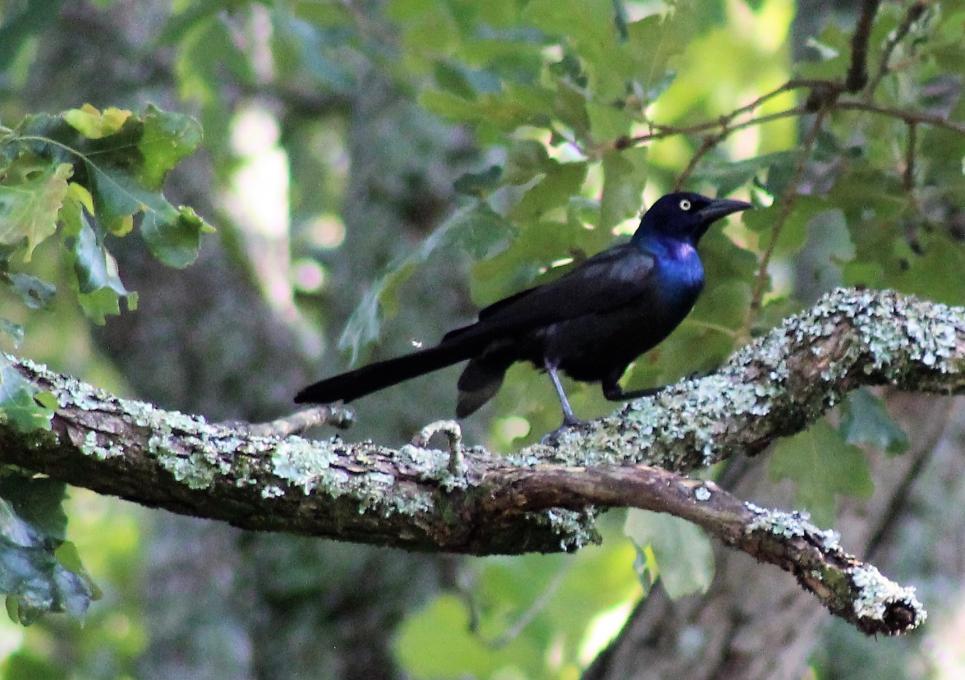

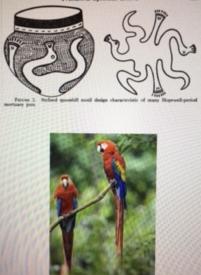
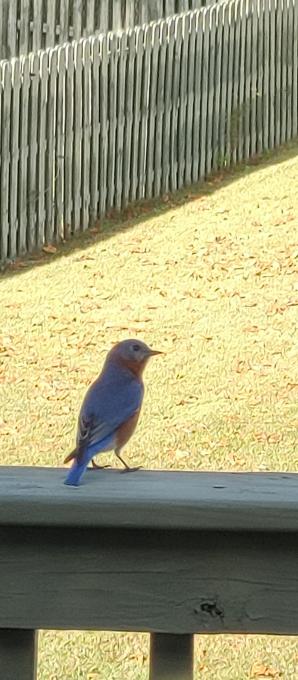 I just signed up for the course as well and find it extremely interesting. I guess I always liked watching and listening to birds, but I never took the time to really learn much about them. Since this course I venture out in the backyard and around the local waterways and I see lots of amazing flying neighbors!! The Eastern Bluebird above is probably one of my favorites because they come and visit with me on the porch, sit on the back of my lawn chairs, and well, just make themselves right at home. I also think they're cute as well :-) I hope to do more bird watching in my area when Covid is under control, but in the meantime my backyard is showing me amazing things!!!! Y'all have fun.............................................
I just signed up for the course as well and find it extremely interesting. I guess I always liked watching and listening to birds, but I never took the time to really learn much about them. Since this course I venture out in the backyard and around the local waterways and I see lots of amazing flying neighbors!! The Eastern Bluebird above is probably one of my favorites because they come and visit with me on the porch, sit on the back of my lawn chairs, and well, just make themselves right at home. I also think they're cute as well :-) I hope to do more bird watching in my area when Covid is under control, but in the meantime my backyard is showing me amazing things!!!! Y'all have fun............................................. 